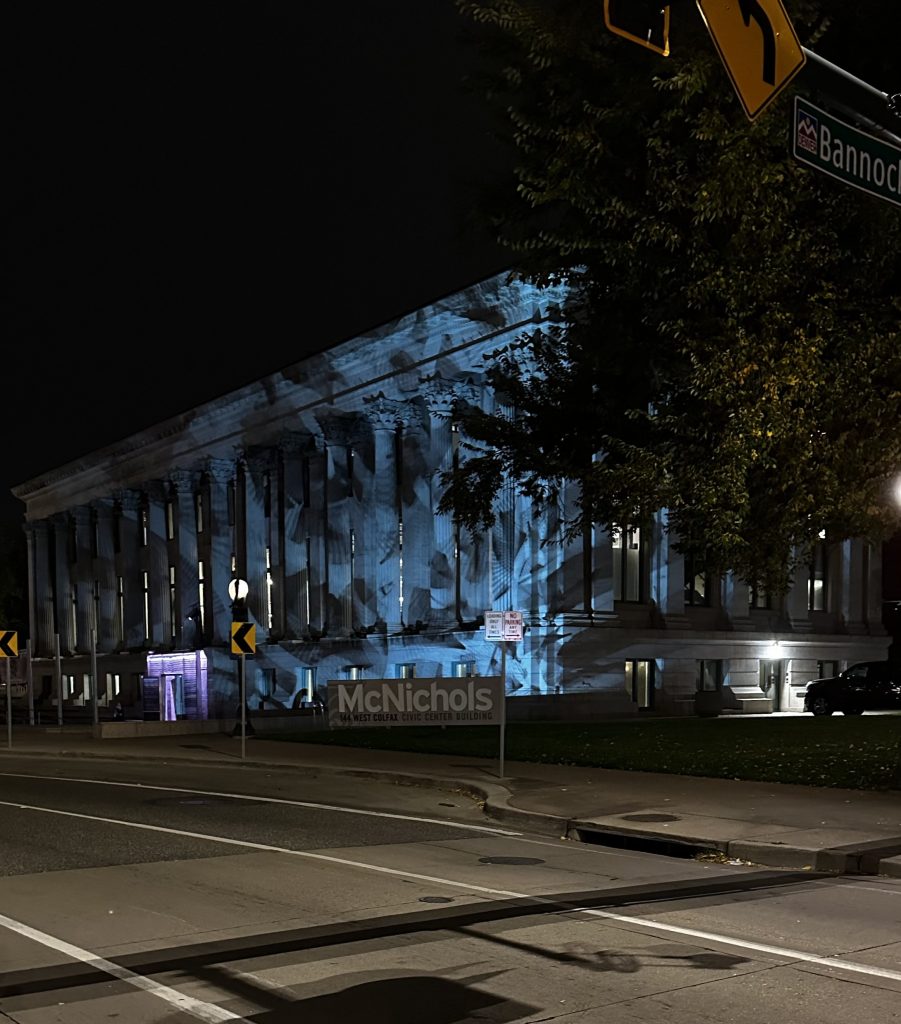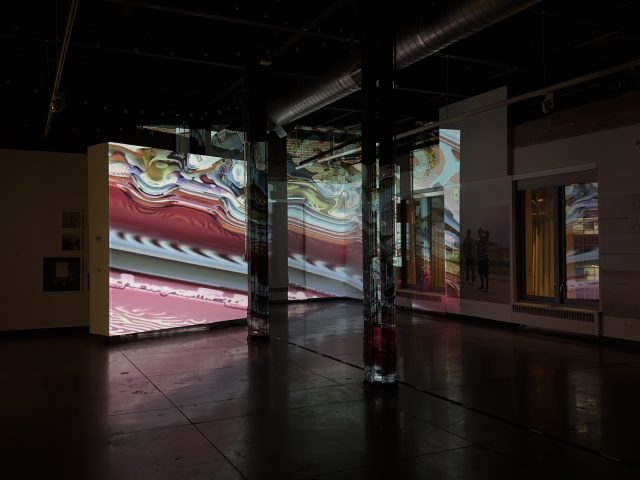The Intentionality of Light, Space, and Art
For many, the first time viewing a projection mapping installation can be quite exhilarating, underscoring by virtue of its content a dense intentionality. Of their own volition or in collaboration with other creators or mission-driven commissioners, projection mappers fulfill specific directives; beholden to story and time schedules in pixel-perfect unison, the mad mappers go all out to generate grandly-lit public performances. Equal in intentionality is the amorphous bending of light by artist and curator, Brett Phares of lightStruct, who creates and exhibits against a backdrop of well, almost anything. This intentionality exploits the natural coalescence of digital light art and, as the name of his gallery suggests, structure. The result? Uniquely immersive experiences that are “co-produced,” to use the words of Icelandic-Danish artist, Olafur Eliasson. Whereby Eliasson’s works are site-specific, Phares’ catalogue, including his own works, are site-interactive. Between and among viewers, the built or natural environment, and the interplay therein of the atmospheric realization of art created with light, the willfully experiential unfolds. Phares’ exhibits are unique sometimes from moment to moment, certainly from night to night.
He says, “It’s a bit of a misnomer when people think my work is about projection mapping.”
Phares explains, “Mapping is pixel-perfect, where no light exits the frame,” which is usually what a commissioner who engages this format wants. He continues, “It tends to be narrative based, linear, and single-voiced.” His work and the catalogue of works he exhibits by contrast are and always will be intended for and not working against the nooks and crannies of structure, including surrounding flora.
By coupling light with structure, a building or plant life become the canvas. An attraction in its own right, digitally-created art projected on architecture unearths multi-voiced illuminations for intimate and memorable perspective on the otherwise familiar and forgotten. In other words, when we walk or drive by the same buildings in our towns and cities, our perceptions of them become as routine as the commute itself. Phares’ exhibits compel us to look at the lived experience or routine literally in a new light, and to wonder, for example, about the sensual curve of a Doric column or the play of light art on a palmetto tree—the heretofore ill-noticed mundane in the trudge of the day.
Phares exhibits his own and the works of artists from around the world. During the 2022 CODAsummit, Hong Kong based German neo-video artist Max Hattler’s “A Very Large Increase…” (2013) danced on the proscenium-style stairs at the McNichol Civic Center Building in Denver, Colorado. Austrian artist LIA’s “Transcendence 115” played with imperfect precision on the columns and façade of the library-turned-event space. “Transcendence” alternated surface space with British artist Ian Gouldstone’s “Grid, Variation 2” (2021) and intentionality was all too clear as the ethereal nature of LIA’s work distinguished itself from the striking force of Gouldstone’s angularity. Classical and modern at once, the orderly threesome of works on the approach to McNichols enchanted with the the staccato tempo of Hattler’s mesmerizing work in concert with the breadth of LIA’s and Gouldstone’s for a provocative plein air mise en scène.
Meanwhile, Australian Luzena Adams’ “Reverie” (2017)—a floating porcelain-skinned red haired nude—rose up from the floor of the top-level gallery space on the interior of McNichols and wafted away into and back down again from the exposed ceiling ducts. Phares, a Denver native, showed “Atmospheric Reach” (2021) on the gallery’s ceiling. His work dazzled onlookers; one attendee said, “It reminds me of laying on the hood of my dad’s car and watching the night sky.” Another Australian, Jonathan McCabe, offered viewers “ADHD” (2021). His works showcase his interest in theories of natural pattern formation and, counterintuitively to its title, “ADHD” mesmerizes and commands attention. Joel Swanson’s “Bubble Sort” (2021) was displayed by Phares as a sort-of overlay to a photographic exhibit titled the Red Road Project. The combination offers depth and intrigue; where do the Native American photos end and Swanson’s projected “Bubble Sort” begin? If Swanson’s artist statement says that he “…illuminates the subtle but powerful ways that language shapes perception,” is it then serendipitous or intentional that the curator displayed the Illinois native’s work against a photographic essay? A familiar building, inside and out, coupled with an exhibition of digital works arouses new or renewed frames of reference on the known. The outcome elicits conversation, raises the level of exchange, and makes us think. Regardless the medium and financial gain aside, aren’t those the ultimate rewards for an artist having depicted the mechanizations of his or her mind and soul for all to see?
# # #


